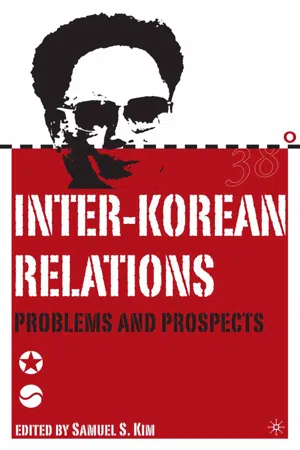About this book
In post-cold War thinking, North Korea was expected to collapse and be absorbed into a single Korean state by the democratic regime in South Korea. Fifteen years later, this has not happened, and June 2000 saw a summit making the warmest inter-Korean relations yet. Over that time period, the two Korean states found instead new mechanisms and methods for interacting with each other on the level of de facto if not yet completely de jure sovereign states and have begun to overcome some of the shadows cast by the partition and violent war that befell the peninsula following World War II. This book examines the origins, dynamics, and impacts of these multi-level relations between North and South Korea, situating them variously as two incomplete nation-states, as a single national entity, and within a larger international environment. The Contributors demonstrate how inter-Korean relations have fostered new forms of conflict management and reconciliation on the peninsula.
Frequently asked questions
- Essential is ideal for learners and professionals who enjoy exploring a wide range of subjects. Access the Essential Library with 800,000+ trusted titles and best-sellers across business, personal growth, and the humanities. Includes unlimited reading time and Standard Read Aloud voice.
- Complete: Perfect for advanced learners and researchers needing full, unrestricted access. Unlock 1.4M+ books across hundreds of subjects, including academic and specialized titles. The Complete Plan also includes advanced features like Premium Read Aloud and Research Assistant.
Please note we cannot support devices running on iOS 13 and Android 7 or earlier. Learn more about using the app.
Information
Table of contents
- Cover
- Contents
- List of tables and figures
- Contributors
- Preface
- Chapter One: Introduction: Managing the Korean Conflict
- Chapter Two: Inter-Korean Relations: A South Korean Perspective
- Chapter Three: Inter-Korean Relations: A North Korean Perspective
- Chapter Four: Inter-Korean Economic Relations
- Chapter Five: China and Inter-Korean Relations: Beijing as Balancer
- Chapter Six: Japan in Inter-Korean Relations
- Chapter Seven: Russia in Inter-Korean Relations
- Chapter Eight: The U.S. Role in Inter-Korean Relations: Container, Facilitator, or Impeder?
- Chapter Nine: The Legal and Institutional Approach to Inter-Korean Relations
- Chapter Ten: International Organizations and the Inter-Korean Peace Process: Traditional Security Versus Nontraditional Security
- Chapter Eleven: The Challenges of Peacefully Reunifying the Korean Peninsula
- Index
